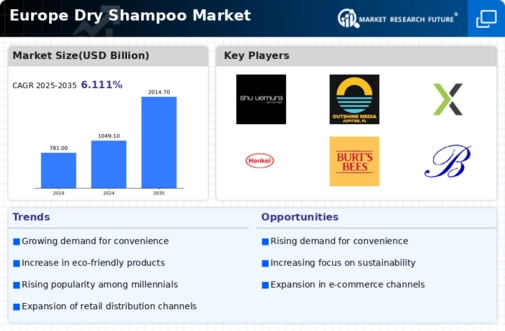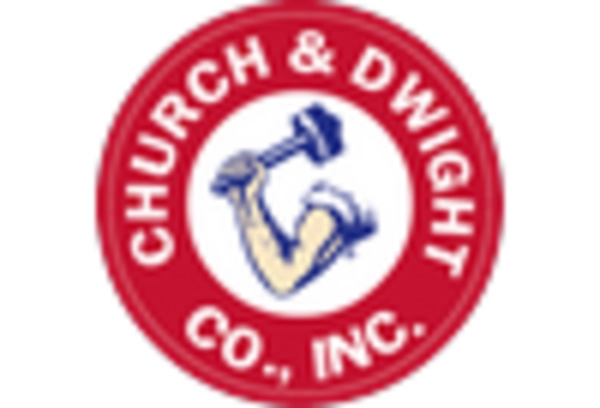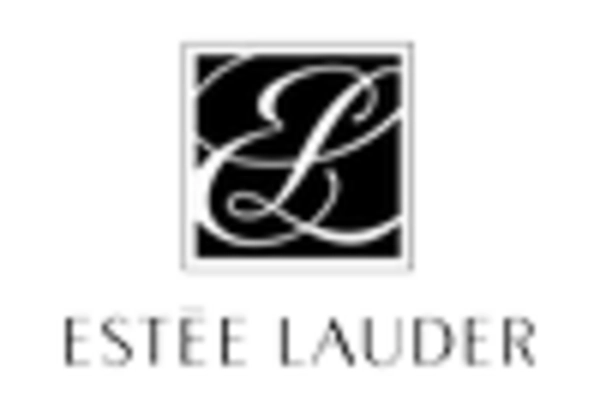Growth of E-commerce Platforms
The dry shampoo market in Europe benefits significantly from the growth of e-commerce platforms. The convenience of online shopping allows consumers to access a wider range of products, including niche and premium dry shampoos that may not be available in physical stores. This shift towards digital retail channels has been accelerated by changing consumer behaviors, with a reported 40% increase in online sales of personal care products, including dry shampoos. The dry shampoo market is thus poised to leverage this trend by enhancing its online presence and optimizing digital marketing strategies. As e-commerce continues to expand, it is likely that the dry shampoo market will see increased competition and innovation, further driving growth in this segment.
Increasing Demand for Convenience
The dry shampoo market in Europe experiences a notable surge in demand for convenience-driven products. Busy lifestyles and the fast-paced nature of modern living compel consumers to seek quick and efficient grooming solutions. Dry shampoo offers a practical alternative to traditional washing, allowing users to refresh their hair without the need for water. This trend is particularly pronounced among urban dwellers and professionals who prioritize time-saving products. According to recent data, the convenience factor contributes to an estimated 30% growth in the dry shampoo market in Europe, as consumers increasingly opt for products that align with their on-the-go lifestyles. The dry shampoo market is thus positioned to capitalize on this growing preference for convenience, potentially leading to further innovations in product formulations and packaging.
Influence of Celebrity Endorsements
The dry shampoo market in Europe is increasingly influenced by celebrity endorsements and collaborations. High-profile figures in the beauty and fashion industries often promote dry shampoo products, which can significantly impact consumer purchasing decisions. This trend is particularly evident on social media platforms, where influencers showcase their favorite products, leading to heightened visibility and desirability. Market analysis suggests that products endorsed by celebrities can experience a sales boost of up to 50% within the first month of promotion. The dry shampoo market is likely to continue capitalizing on this trend, as brands seek partnerships with influencers to enhance their market reach and appeal to younger demographics.
Shift Towards Health-Conscious Choices
The dry shampoo market in Europe is witnessing a shift towards health-conscious choices among consumers. Increasing awareness regarding the potential harmful effects of certain chemicals in hair care products drives individuals to seek alternatives that are perceived as safer and more natural. This trend is reflected in the rising popularity of dry shampoos formulated with organic and natural ingredients, which appeal to health-conscious consumers. Market data indicates that products labeled as 'free from sulfates and parabens' have seen a 25% increase in sales within the dry shampoo market. As consumers become more discerning about the ingredients in their personal care products, the dry shampoo market is likely to adapt by expanding its offerings to include cleaner, more transparent formulations.
Rising Interest in Travel-Friendly Products
The dry shampoo market in Europe is experiencing a rising interest in travel-friendly products. As travel resumes and consumers seek convenient solutions for maintaining their grooming routines on the go, dry shampoos are increasingly viewed as essential travel companions. Compact packaging and multi-use formulations cater to the needs of travelers, making dry shampoo an attractive option for those looking to minimize luggage space. Recent surveys indicate that approximately 35% of consumers consider portability a key factor when selecting hair care products. The dry shampoo market is thus likely to expand its offerings to include travel-sized versions, further tapping into this growing segment of the market.

















Leave a Comment